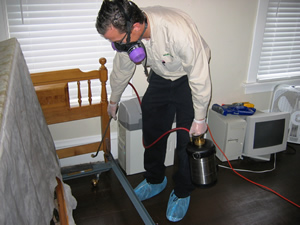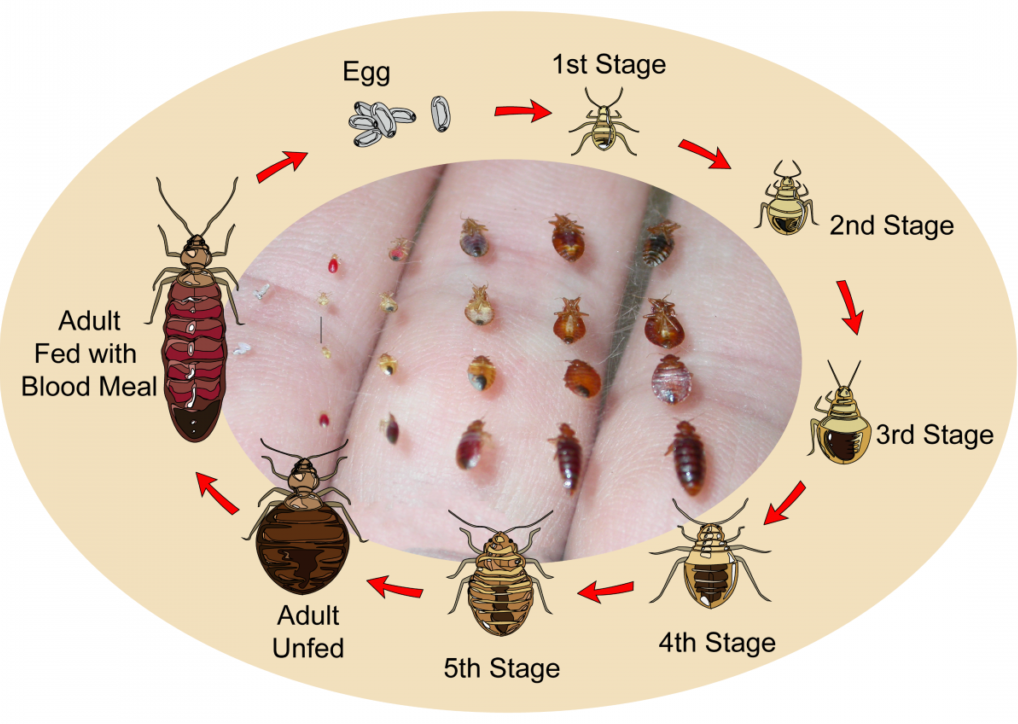Get Educated Regarding the Kinds Of Insect Control Techniques and Their Advantages for House Owners
Understanding the different insect control methods readily available to homeowners is vital for efficient pest monitoring. Home owners who are educated can make tactical selections that not only address pest concerns yet additionally enhance the general top quality of their living environment.
Chemical Parasite Control Techniques
Chemical pest control approaches are a critical part of incorporated parasite monitoring strategies for homeowners looking for effective remedies to pest infestations. These methods involve the application of chemical compounds made to eliminate or deter parasites that endanger individual building, wellness, and comfort. Common chemicals used consist of insecticides, rodenticides, fungicides, and herbicides, each tailored to target particular pests.
The key advantage of chemical insect control is its rapid performance; several formulations supply immediate results, reducing pest populaces significantly quickly. Additionally, advancements in chemical formulas have caused products that are more eco-friendly and have lower toxicity levels for non-target organisms when used appropriately.

Organic Insect Control Techniques
All-natural bug control techniques have actually gotten prominence as homeowners seek more secure and a lot more sustainable alternatives to traditional chemical approaches. Biological parasite control techniques utilize all-natural predators, bloodsuckers, or virus to manage insect populaces efficiently. This method is not just environmentally pleasant however additionally reduces the danger of damage to non-target types, including advantageous insects and wild animals.
One of one of the most usual biological control approaches includes introducing natural predators into the atmosphere. For instance, ladybugs can be used to control aphid populations, while nematodes target soil-dwelling pests like grubs. Additionally, parasitoids-- organisms that live on or within a host-- can be used to regulate specific insect species by laying eggs inside them, eventually leading to their demise.
One more strategy is the use of biopesticides, which are acquired from natural materials such as microorganisms, minerals, or plants (bed bug exterminator). These products can efficiently target parasites while presenting minimal threat to pet dogs and people. Generally, biological insect control strategies offer home owners with a reliable ways of insect administration that straightens with ecological concepts, advertising a much healthier living atmosphere while lowering reliance on synthetic chemicals
Mechanical Bug Control Strategies
Mechanical pest control techniques incorporate a range of methods that physically avoid or eliminate pests without the usage of chemicals. These methods are particularly beneficial for house owners looking for eco-friendly alternatives while ensuring the security of their home.
One common approach is making use of obstacles, such as nets, traps, and displays, which stop insects from going into homes or specific locations. Setting up home window screens can properly maintain pests out, while making use more helpful hints of physical obstacles around gardens can prevent bigger pests like deer or bunnies. Additionally, mechanical catches designed for rats can record and remove these parasites without the need for harmful compounds.
One more effective method includes using brooms and vacuums to remove parasites straight from surface areas. Routine cleansing and upkeep can significantly minimize pest populations by eliminating food resources and concealing places. Utilizing gadgets like ultrasonic insect repellents can deter different pests via noise waves that are undesirable to them yet inaudible to human beings.
Social Insect Control Practices
Cultural parasite control methods concentrate on customizing the setting and administration methods to create problems that are less favorable to pest invasions. These techniques are basic in preserving a well balanced ecological community and minimizing the reliance on chemical treatments. By altering agricultural methods, house owners can efficiently discourage insects while promoting plant wellness.
One common method consists of plant rotation, which interrupts the life process of bugs by altering the kinds of plants expanded in a certain area (bed bug exterminator). This not only lessens pest populaces but also improves dirt health. In addition, intercropping-- growing varied plants in closeness-- can perplex insects and lower their capability to locate their favored host plants
Water management is another critical element of cultural practices. Proper watering strategies can protect against standing water, which functions as a reproduction ground for mosquitoes and various other parasites. Keeping tidiness in and around the home, such as regularly removing particles and food waste, can dramatically minimize bug attraction.
Integrating these cultural techniques into an extensive pest administration approach permits property owners to create an atmosphere that naturally deters pests, consequently improving the efficiency of other control approaches while advertising lasting gardening and landscape design.

Integrated Parasite Management Approaches
Integrated Pest Administration (IPM) stands for an alternative method that combines various approaches to effectively take care of parasite populaces while reducing environmental effect. This methodology incorporates biological, social, physical, and chemical practices to attain sustainable pest control. By analyzing pest populations and their all-natural adversaries, IPM emphasizes monitoring and recognizing insects prior to implementing control actions.
Among the core principles of IPM is making use of thresholds, which establish the level of pest activity that requires treatment. This ensures that therapies are used only when necessary, decreasing the reliance on chemical pesticides. Organic control techniques, such as presenting all-natural predators or parasites, operate in conjunction with social techniques like plant turning and habitat control to interrupt pest life cycles.
Furthermore, index IPM encourages using least-toxic chemical choices when intervention is necessary, prioritizing items that posture marginal danger to non-target organisms and the environment. For property owners, adopting IPM approaches not only enhances the effectiveness of bug administration yet also promotes a much healthier living setting, promoting biodiversity and decreasing chemical exposure. Inevitably, IPM equips homeowners to make enlightened choices that stabilize parasite control with environmental duty.
Verdict
In final thought, recognizing the various bug control techniques equips homeowners to make informed decisions pertaining to pest monitoring. Each strategy-- chemical, organic, mechanical, social, and integrated insect monitoring-- uses distinct advantages that cater to different demands and choices.
Recognizing the various pest control techniques readily available to property owners is necessary for efficient pest monitoring.Chemical bug control techniques are a crucial part of incorporated pest management methods for homeowners looking for effective services to pest infestations. On the whole, organic bug control techniques provide home owners with an effective ways of bug administration that straightens with eco-friendly concepts, promoting a much healthier living atmosphere while lowering dependence on artificial chemicals.
Cultural insect control techniques concentrate on modifying the environment and monitoring methods to create problems that are much less conducive to pest invasions.In verdict, understanding the various parasite control methods equips home owners to make a knockout post informed choices pertaining to pest administration.